Peter Eisenman architecture can be challenging for an audience. And, it turns out, writing a blog post about him can also be challenging!
I’ve always been instinctively drawn to his process-based manipulations of the grid in a sort of postmodern-yet-with-strains-of-modernism kind of way. A Peter Eisenman site “sounds” like a Philip Glass composition to me.
I love the work, yet as I’ve started to read articles about it, I’ve found many of them over the head of an avatar of very little brain, and even worse, many of them going on at length about how other people totally misunderstand Eisenman’s work.
So, if I try to talk about his work in any intellectual fashion, not only will I probably “get it wrong,” but I apparently have a pretty good chance of getting it 180 degrees wrong! 😛
Perhaps I should just make it a short blog post and show you a lot of pictures! 🙂
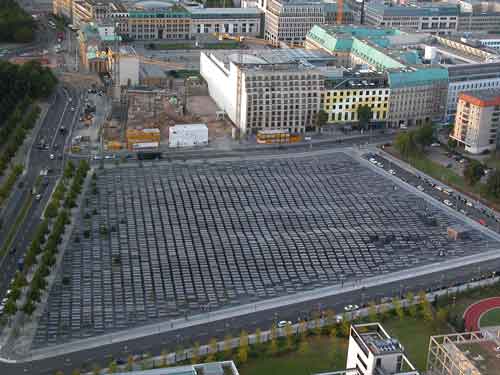

Eisenman’s work turns so often to the grid. Not exactly a modernist grid radiating it’s perfection, but more of a postmodern grid that occasionally longs for that impossible perfection. In our work, VB/CO has often turned to grids, VB01 – Girl Next Door was a 3×3 grid of avatars, and most recently and most explicitly, VB18 – Avatar Chess was 32 avatars on the 8×8 grid of a chess board.

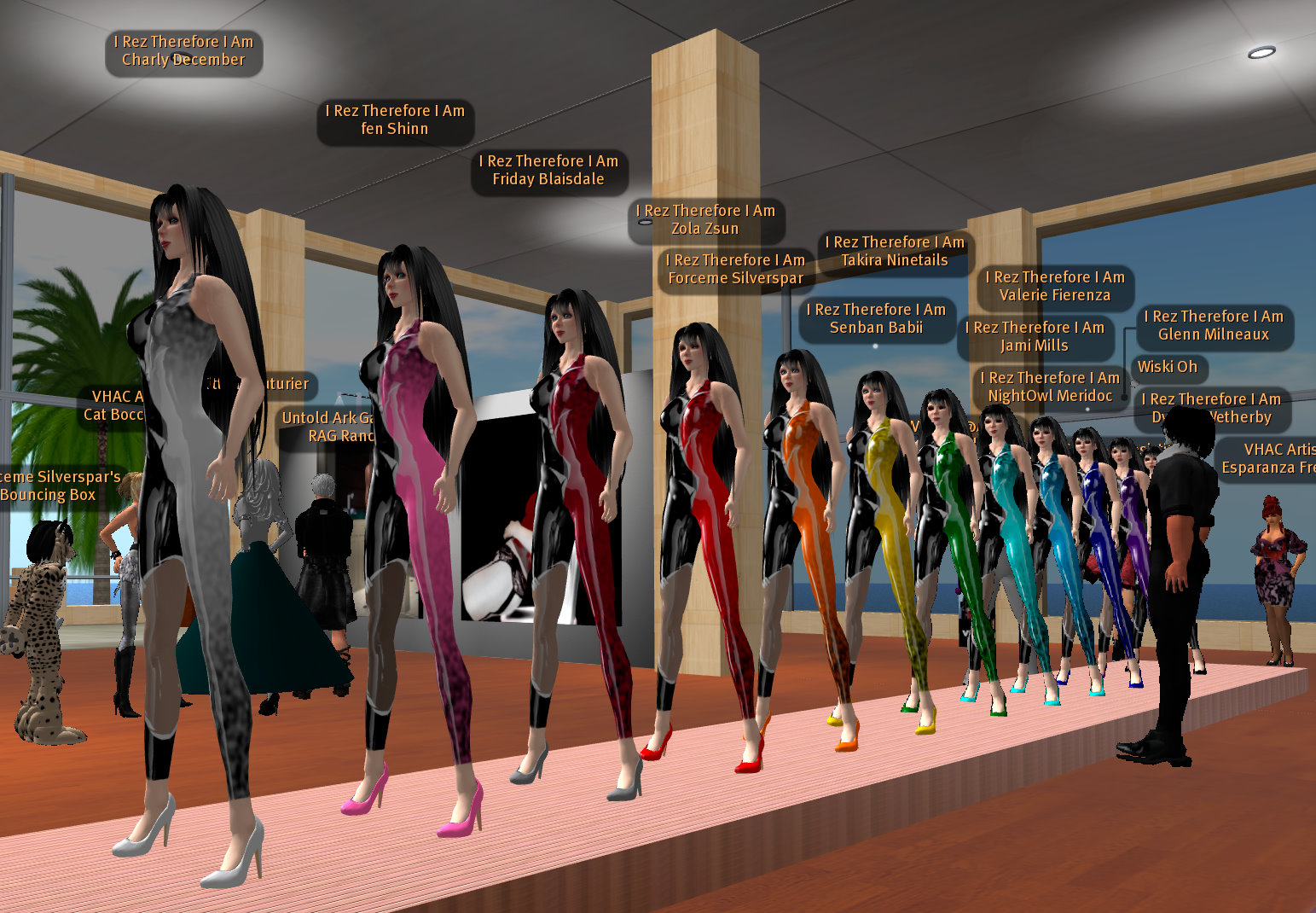

Because Eisenman’s architecture tends to be process oriented rather than pursuing a specific end result in a “form follow function” sort of way, it’s often thought of as cold or detached or other-than-human. Yet paradoxically, he’s done quite a bit of “healing” in his work. Directly so in taking on enormous, devastating cultural events as with his 1998-2005 project Memorial to the Murdered Jews of Europe, in Berlin. His work has also “healed” or “unified” in less overwhelming circumstances as with his 1983-1989 Wexner Center for the Visual Arts, in Columbus, Ohio.

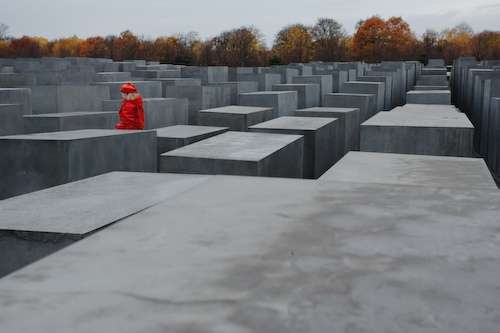
Like many cities, Columbus, Ohio exists on a grid. In a perhaps elitist or isolationist move, or perhaps simply in a small, fledgling institution’s grasping for some sense of identity, when Ohio State University built University Hall in the 19th century, it was, and the university had forever since been, built on a grid that was rotated off the city grid by 12.25 degrees. Over the decades, the ever expanding university eventually infused it’s tendrils into the surrounding city where these two, competing grids intermingled yet forever perpetuated an alienating tension. In some cases, as with the Athletic Complex, the facility was built on the Columbus grid and not the OSU grid.
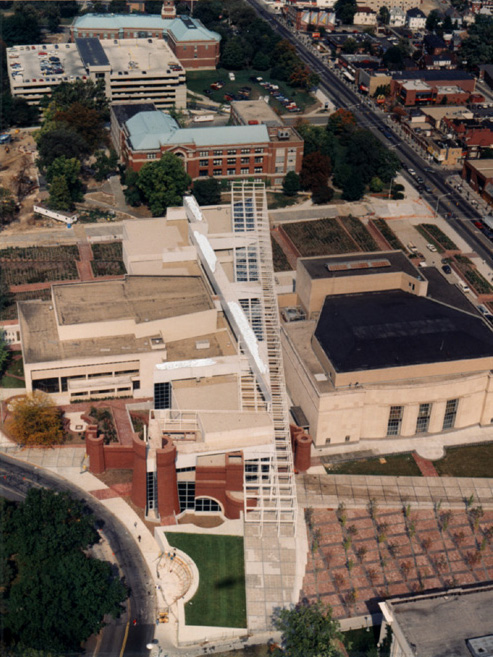
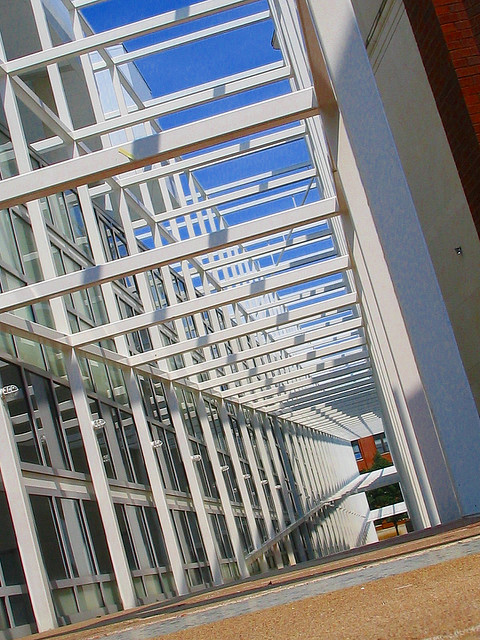
In his design for the Wexner Center for the Visual Arts, Eisenman integrates the geometries of both grids in a dynamic play that both unifies and differentiates.
In our multiple-persona exploration VB15-Gracie/Kris, we featured avatars on a 4×4 grid of embodiment possibilities. Our geometric grid did not feature the postmodern complexity of Eisenman’s work, yet I felt that this intersection of worlds had a visceral resonance with the Wexner center. At least for me, VB15 – Gracie / Kris “sounded” like a Philip Glass composition.
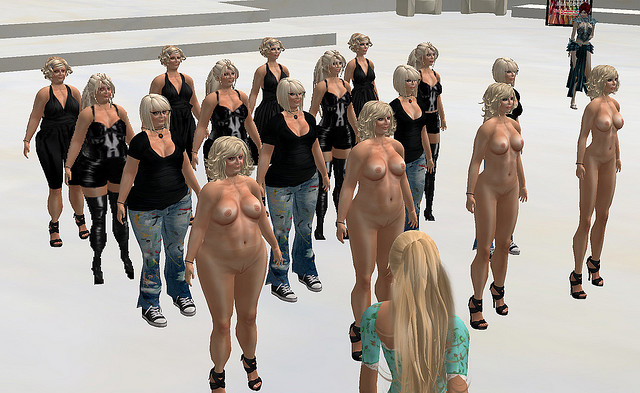
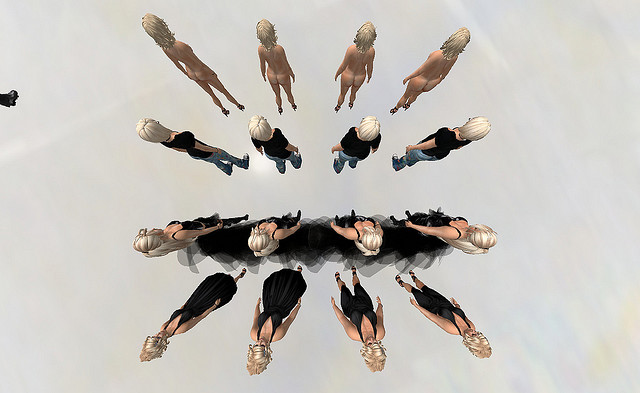
In retrospect, I wish I’d more liberally experimented with adapting Eisenman’s Wexner center plan for Gracie/Kris. The disruption and integration of of the Columbus grid and the OSU grid dancing pas de deux at Wexner is so much of the feeing one gets as the personas and instantiations of Gracie and Kris collide and commingle, as all the wild-improbable-dreams and deepest-secret-fears flex in beautiful imperfection.

Like so many architects, Peter Eisenman’s Built:Designed ratio is less than 50%. Of his 100+ architectural propositions, he’s realized about a quarter in the physical world.
Oopsy, did I say “physical world”… like… “First Life”… hmm… so what are the designs not realized in the physical world? Virtual Architecture? If an architect spends a career on tilt-up warehouses, I’m not certain how valuable a virtual portfolio is, but when an architect explores ideas or process, the designs are as relevant, visionary, and impactful as the physically built subset. While Eisenman is best know for his built works like Berlin and Columbus, some of his most compelling ideas are found in his larger, “unbuilt,” “virtual” portfolio.
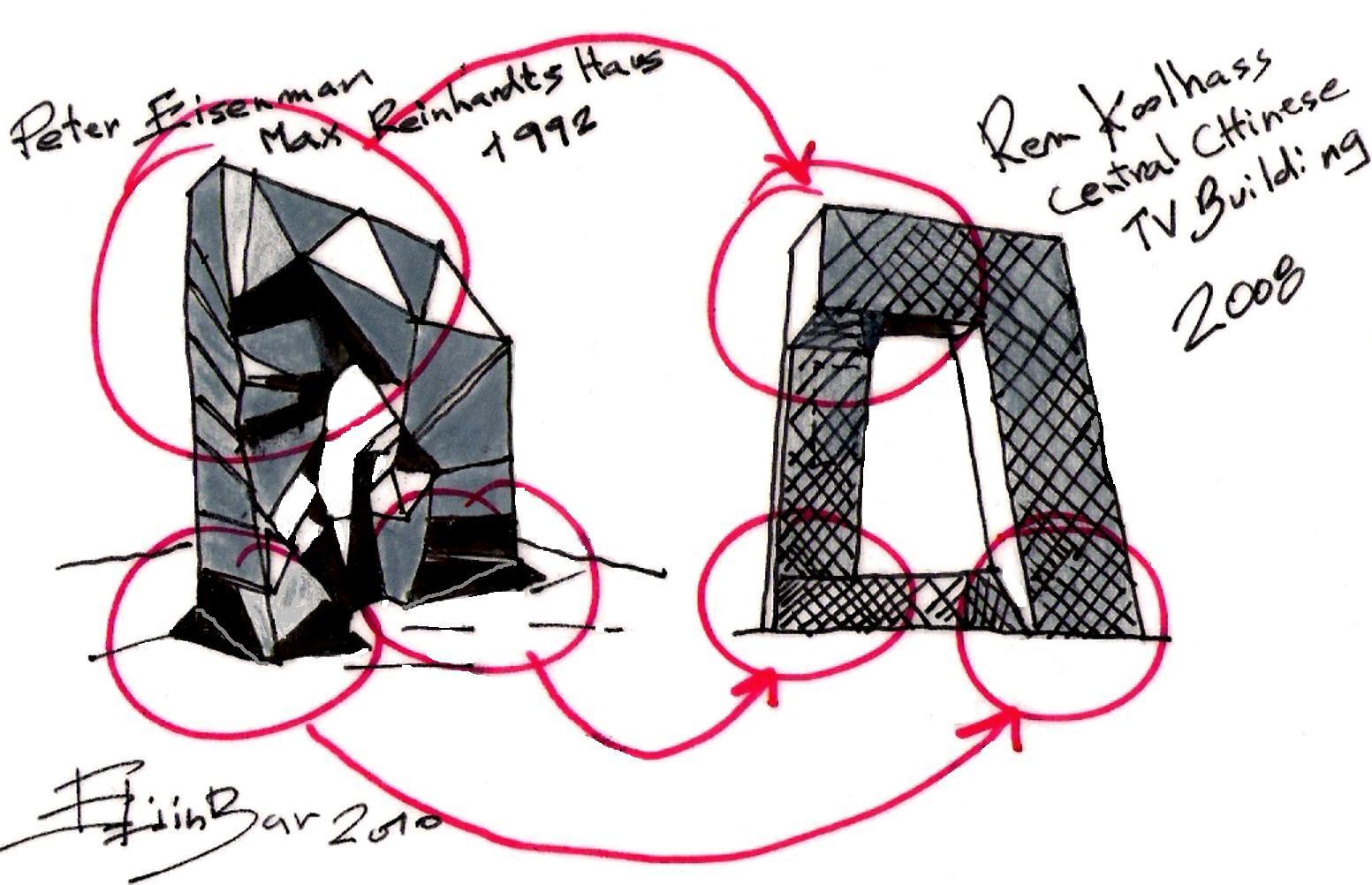
Apparently, yes, if a mind is at work in the forest and nobody hears it, it is still a mind exploring possibilities. And thanks to “long-tail-culutre” the tree falling in the mental forest will echo for a long time.

We’re all familiar with “Impossible IRL” architecture that transgresses, for example, the laws of physics… but one could consider Impossible IRL to include works that transgress the laws of Economics or Politics.
With Eisenman’s Memorial to the Murdered Jews of Europe, which, in it’s 3rd version is today a celebrated architectural monument, the project actually died twice, as he described to a group of Cornell students:
http://www.news.cornell.edu/stories/Feb09/Eisenmanvisit.da.html
After winning the design competition in 1997, in collaboration with sculptor Richard Serra, Eisenman agreed to a compromise design requested by then-chancellor Helmut Kohl that caused Serra to protest and then exit the project…
The completion of Kohl’s preferred version of the project, Eisenman said, depended on the outcome of the 1998 World Cup, “The Germans lost the World Cup, Kohl lost the election, and sure enough, the project was dead.”
An Impossible IRL-Physics project is different in character from an Impossible IRL-Economics or Impossible IRL-Politics or Impossible IRL-World Cup architectural work. Yet they are all reminders that we live in a world where ideas can bloom and take “physical” form, without astronomical budgets, state approval, audience/cultural readiness, etc. We live in a world where Architecture, Bodies, Fashion, Art, can all explore as easily as they explore neoclassical idiom, the limitless blue-sky conceptual investigations of the human mind.
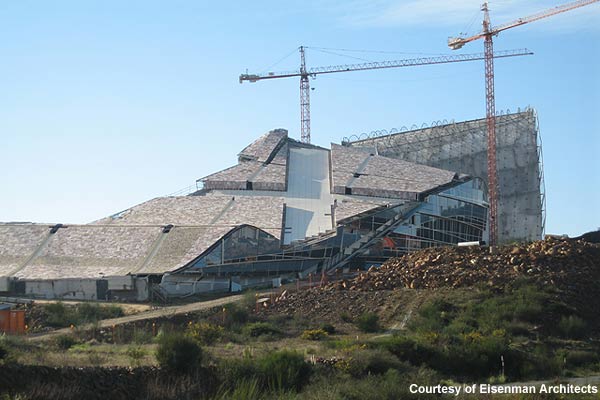
Because SL so often shows the heavy hand of the capitalist / consumerist / marketplace, perhaps we too often strive to create art that isn’t too far a stretch for our audience. Perhaps we should strive to have a larger “virtual” portfolio than “built” portfolio, although, in Second Life, these can actually be one-in-the-same! 🙂
Many people do leave SL because the degree of creative freedom this world affords is overwhelming and… paradoxically… oppressive! Yet we should all consider in our work if we are pushing far enough. Are we really rethinking consciousness & culture? Or are we putting out more safe and delicious fluff that’s fairly certain to get us more pats on the back?
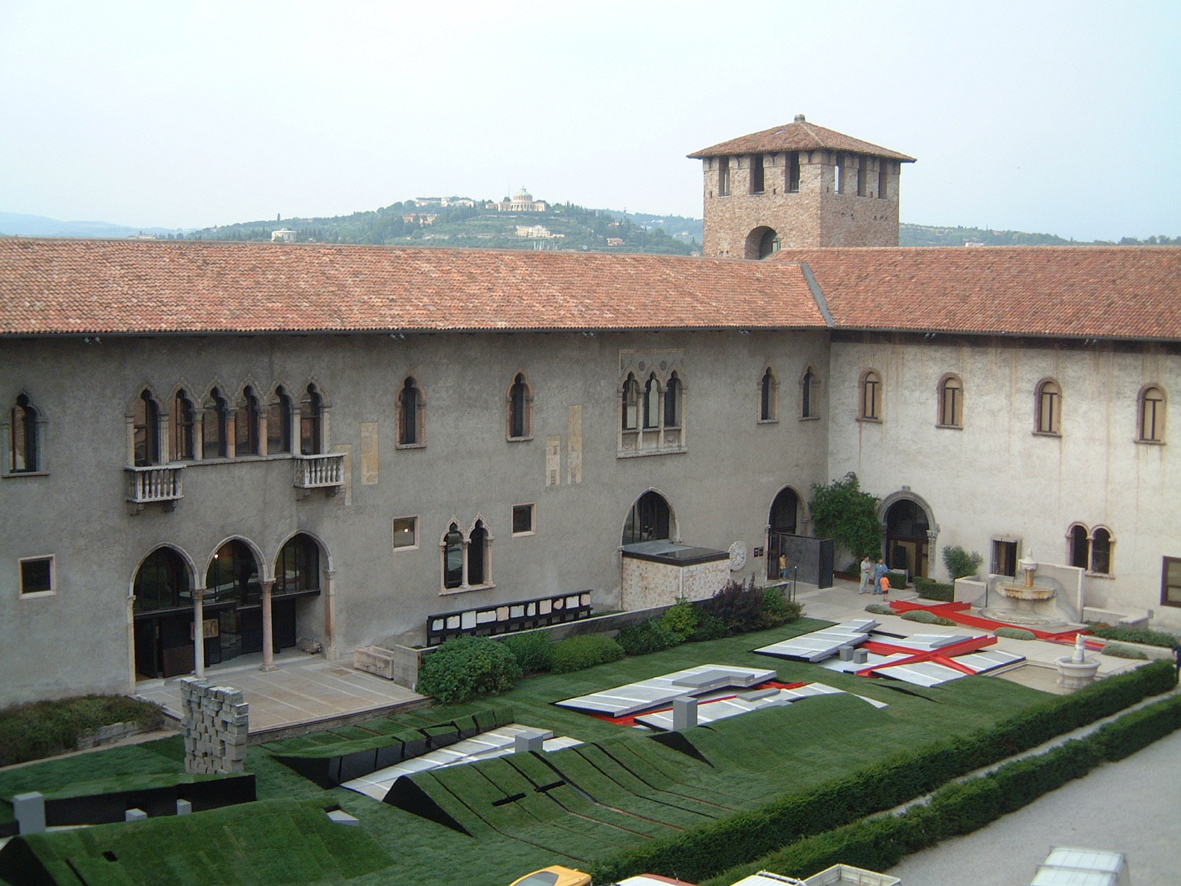
Next week I’ll post a Previz on this blog for our upcoming performance VBXX – Taaratantaarinen. (28 August 2010) The work takes as inspiration the sculptor of the 21st century, Anish Kapoor, and the architect of the 20th century, Eero Saarinen. Saarinen was actually crucified for his multiplicity back in the day, but today he is deified for it.
I have not blogged about architects before, so it’s interesting to have Eisenman this week and Saarinen next week. Part of the impulse in Taaratantaarinen can be found in the biomorphic forms that occupy some parts of the Saarinen and Eisenman oeuvres. It’s a safe bet that the famous modernist and the famous postmodernist / deconstructionist came to those forms from different ideologies, yet it does feel as though those portions of their practices do have a certain aesthetic kinship. Or at least it feels that way to me. I really hope no architecture types read this! 😛 If you do… feel free to flame away in the comments below.
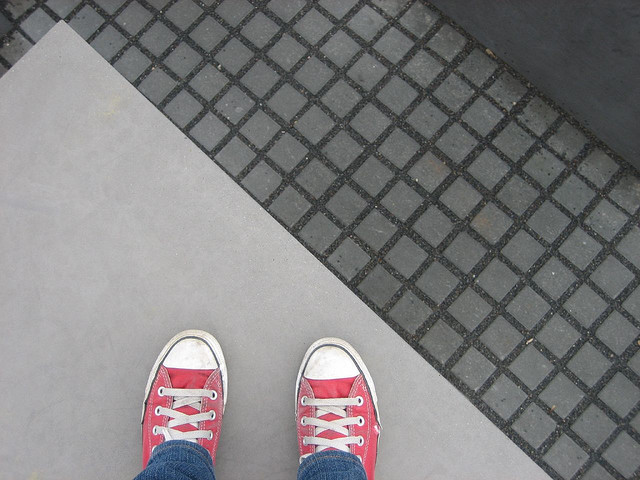

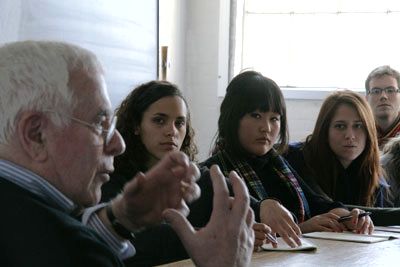
1 thought on “Peter Eisenman”